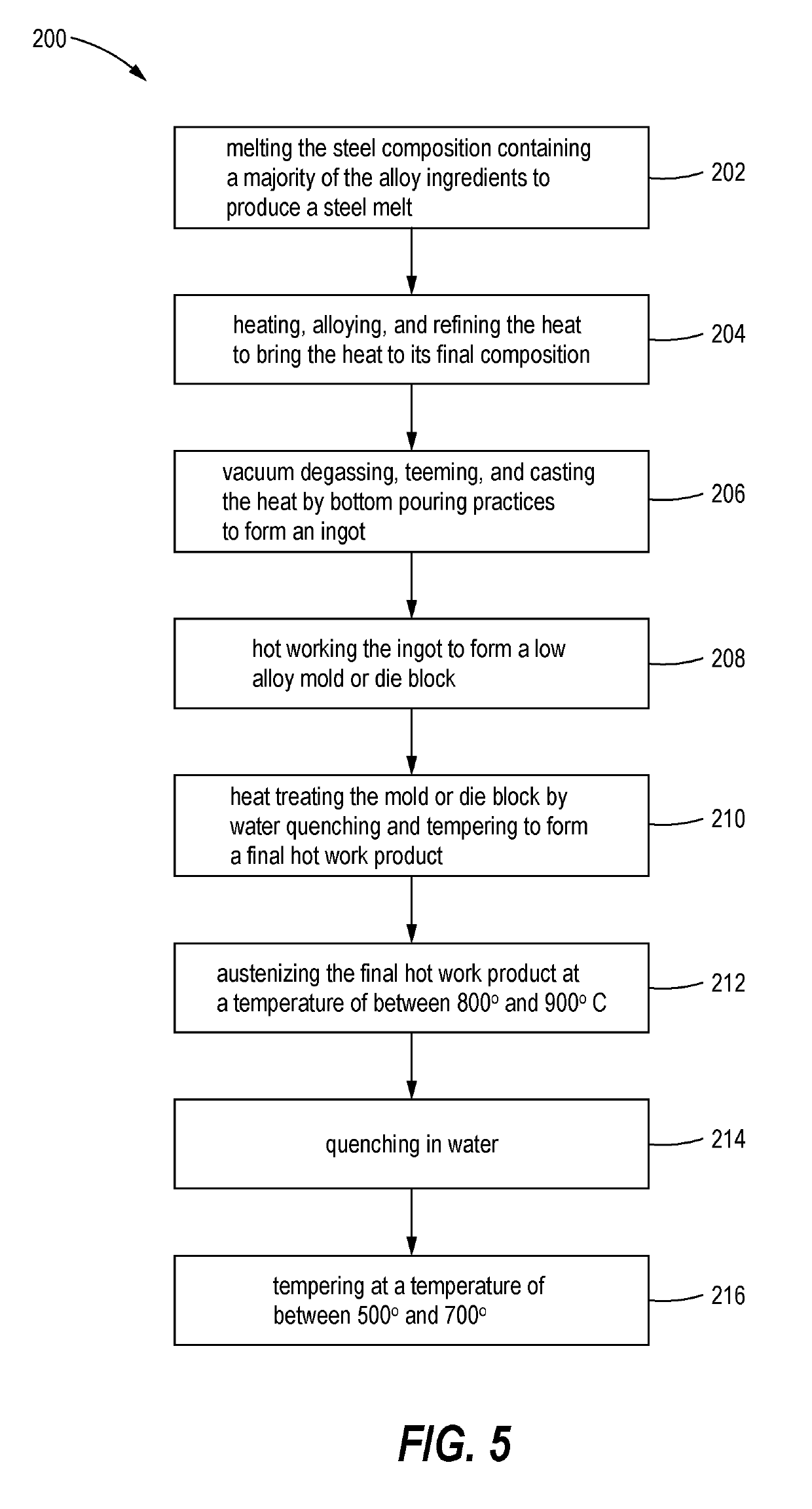Economical plastic tooling cores for mold and die sets
a tooling core and plastic technology, applied in the field of plastic tooling industry, can solve the problems of uneconomical unfavorable use of similar grades in the core side of the tooling set, and the inability of the core side of the steel to take as much polish as the cavity sid
- Summary
- Abstract
- Description
- Claims
- Application Information
AI Technical Summary
Benefits of technology
Problems solved by technology
Method used
Image
Examples
Embodiment Construction
[0017]Referring first to FIG. 1, the core side of a plastic tooling set is indicated generally at 10, the core at 11 and the parting line plane at 12.
[0018]Referring next to FIG. 2, the cavity side of a plastic tooling set is indicated generally at 20, the cavity at 21 and the parting line plane at 22. It will be understood that when the core side 10 and the cavity side 20 are in molding engagement the parting line planes 12 and 22 will be in abutting engagement to form a parting line 23 (see FIG. 3), and the core side 11 will be received in the cavity 21.
[0019]Since the dimensions of the core 11 are slightly smaller than the dimensions of the cavity 21, a part will be formed in the space 24 between the core and the cavity (see FIG. 4). The two halves 10 and 20 will of course be held in fixed positions when closed by suitable means well known in the industry, not shown.
[0020]Referring now specifically to FIG. 4, it will be seen that the parting line 23 forms a clear line of demarcat...
PUM
| Property | Measurement | Unit |
|---|---|---|
| Temperature | aaaaa | aaaaa |
| Temperature | aaaaa | aaaaa |
| Angle | aaaaa | aaaaa |
Abstract
Description
Claims
Application Information
 Login to view more
Login to view more - R&D Engineer
- R&D Manager
- IP Professional
- Industry Leading Data Capabilities
- Powerful AI technology
- Patent DNA Extraction
Browse by: Latest US Patents, China's latest patents, Technical Efficacy Thesaurus, Application Domain, Technology Topic.
© 2024 PatSnap. All rights reserved.Legal|Privacy policy|Modern Slavery Act Transparency Statement|Sitemap


